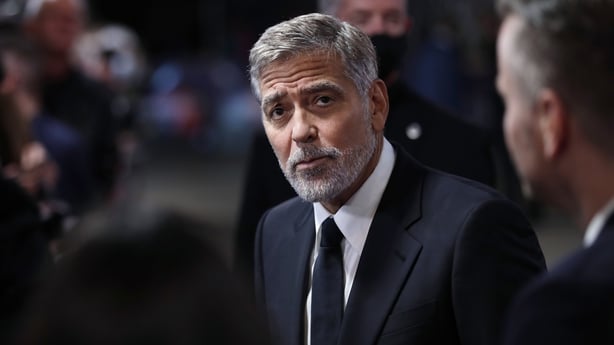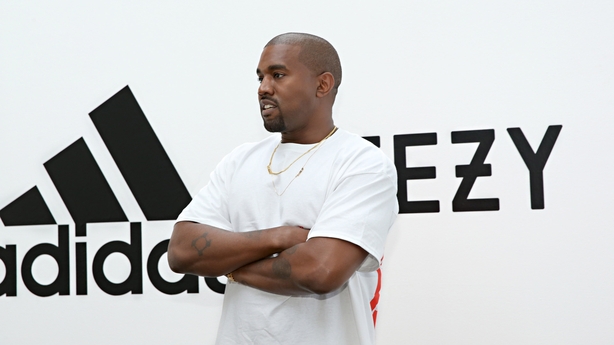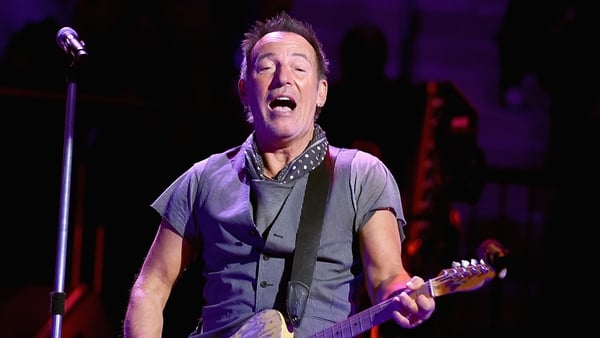The first known example of a celebrity endorsement dates all the way back to 1882.
Lillie Langtry was a British socialite and actress on the West End and, in that year, became the poster girl for Pears Soap.
Though depending on your definition of ‘celebrity’, you could argue that the practice goes back even further than that.
Because, from the 15th Century onwards the likes of the British royal family has been issuing ‘royal warrants’ – which marks a company out as a supplier to the royals.
And companies that got that seal of approval – which came with a literal seal they could add to their products – quickly used that in their promotional material.
After all, if it’s good enough for the royals, it’s good enough for everyone else.
And that’s a practice that essentially apes the celebrity endorsements we’re familiar with today.
Why are they so popular?
We need your consent to load this rte-player contentWe use rte-player to manage extra content that can set cookies on your device and collect data about your activity. Please review their details and accept them to load the content.Manage Preferences
That’s a question that many have tried to answer over the years, because there seems to be no doubt that they are effective. The question is why.
As a result there are now swathes of academic papers trying to figure this out.
In one case viewers’ eye movements were tracked, and that research found that people made a decision on buying a product far quicker when a celebrity was in its orbit. (On the downside, it also found that people tended to fixate on the celebrity – meaning their attention was not on the product itself).
Ultimately, though, their popularity boils down to the fact that people are interested in celebrities – they tend to trust them, and tend to want to be like them. By positioning your product next to a well-liked star, you’re aiming to benefit from their reflected glow.
You’re also paying to simply stand out from the crowd – because in a world that’s full of advertising, you need something eye-catching (like a well-known face).
It’s no mystery why they’re popular with celebrities, though…
No – because endorsements can be extremely lucrative to those involved.
Big endorsement deals tend to run into the millions – with that figure growing depending on how big the celebrity is, and how long their relationship runs.
The actress Penelope Cruz, for example, was said to be earning around $2m per year to be L’Oreal’s spokesperson – and that was probably a couple of day’s work filming an ad or two and doing a photo shoot.
Up to a few years ago, George Clooney had reportedly earned $40m from his long-running endorsement deal with Nespresso – and as that partnership continues, the figure is sure to be higher still today.
Another George – boxer George Foreman is said to have made upwards of $200m from his endorsement of the lean, mean, fat reducing grilling machine.
The legend goes that that product was actually offered to Hulk Hogan first, but he opted to endorse a meatball maker instead (though the Hulkster has since claimed that he actually missed the call from his agent, and by the time he rang back Foreman had already snapped up the deal).
But really all of those deals are in the hapenny place compared to the big sports stars.
Because both Cristiano Ronaldo and Lionel Messi have each, separately, signed up to $1 billion endorsement deals.
Ronaldo’s is with Nike, Messi is with Adidas.
They are lifetime deals, so that money is spread out over a long period of time – but it’s still an extraordinary amount to be making.
And those deals are on top of their bloated earnings on the pitch – as well as other endorsement deals they might have going on (like Messi’s deals with Budweiser, Pepsi and Huawei).
Soccer players doing deals with sportswear brands makes sense – But many deals don’t….

No – there have been some bizarre ones over the years.
One doing the rounds at the moment sees Snoop Dogg and Martha Stewart promoting a brand of lighter.
Though there is some logic there, as it not only plays on their surprise, real-life friendship, it also alludes to the variety of uses a lighter has. Such as lighting a candle… or something else.
A far stranger one was Ozzy Osborne’s butter ad in 2006; a deal that attempted to cash in on the popularity of reality show The Osbornes.
Big butter obviously has deep pockets, because Johnny Rotten did a butter ad of his own back in 2008. He later justified it by saying it essentially paid for a Public Image Limited tour.
Other rock icons to have done ads in recent years include Iggy Pop – who advertised car insurance in the UK.
And then there’s Bob Dylan – who back in 2004 appeared in an ad for Victoria’s Secret, of all things.
Does that not damage the celebrity’s credibility?

You would think.
It doesn’t seem so long ago that people – particularly musicians like Rotten and Dylan – would be branded a ‘sell out’ for even the slightest transgression – never mind taking money to shill for butter or underwear.
Remember that Bob Dylan was once booed and called ‘Judas’ by his own fans for daring to pick up an electric guitar.
But it’s not a coincidence that all of these rock stars made their ads when they were - if not passed their prime - certainly passed the peak of their cultural influence.
However it’s also influenced by the fact that we’re now in this kind of post-irony era.
A celebrity can do an ad that pokes fun at their public persona, or maybe even the fact that they’re doing an ad, and get away with it as a result.
There’s also the fact that we’re so saturated with advertising – and branding has bled its way into so many corners of our lives, that the public are somewhat desensitised to it now.
It’s common now to see big tours having a sponsor attached – in the form of a ‘tour partner’.
And collaborations are everywhere now, too.
They see a celebrity or artist supposedly helps to create a line of clothes or headphones, for example, which are essentially endorsement deals in disguise.
Celebrities being heavily involved in brands is very common now, isn’t it?

Yes – pretty much every major clothing chain has at least one clothing line that’s "curated" by a big name.
But it’s going even further than this now – because many celebrities are even getting on board as investors in new brands.
This has happened a lot with drinks, for example.
Ryan Reynolds, Brian Cranston and Kylie Minogue all have wine or spirits brands of their own.
And, let’s be honest, they’re not brought in for their distilling or fermentation skills.
Instead, their main draw is to be a face for the brand – which helps it to stand out in a very crowded market.
Often they will put some of their own money in to the company to help it on its way. Though, in some cases, their investment is ‘in kind’ – essentially the use of they get a stake in return for their promotional prowess.
It can be incredibly lucrative too.
In 2018 George Clooney was named the highest paid actor in the world – despite him having not released a film since 2016.
Instead his earnings that year were almost entirely based on the money he made from the sale of tequila brand Casamigos to Diageo.
He co-created it in 2013 but sold it in 2017 in a deal worth up to $1 billion. That net him somewhere in the region of $233m.
Can these deals backfire, though?

Absolutely.
Adidas is still counting the cost of its collaboration with Kanye West, or Ye as he’s now known.
The Yeezy line that came out of it was massively lucrative for all involved – it was expected to bring in $1.2 billion in revenue last year.
But Adidas walked away after Ye posted antisemitic remarks on Twitter, costing it €600m in sales in the last three months of 2022 alone.
An even bigger headache it was left with was the €1.2 billion worth of Yeezy stock it had in its warehouse that it had to figure out what to do with.
In the end it decided to start selling that stock off – and donating some of the proceeds to charity.
But the risk can cut the other way, too.
As people may remember, there was a glut of cryptocurrency ads during both the 2021 and 2022 Super Bowls – the most expensive ad time the world.
Among the big names to hawk for the cryptocurrency market was Matt Damon – who featured in an ad for Crypto.com.
But Super Bowl 2022 came just weeks before the crypto market collapsed – which saw lots of people lose a lot of money.
No doubt some of those losers had only bought in as a result of those flashy, expensive Super Bowl ads.
Matt Damon’s justification was that his non-profit water charity needed money – so that ad helped pay for safe and clean water for thousands of people.
But while his endorsement may seem problematic in hindsight, it could have been worse.
Because among the other big names to promote crypto firms were comedian Larry David and NFL star Tom Brady.
They both appeared in ads for FTX - the crypto exchange that’s now at the centre of an $8 billion fraud case in the US.
In fact those ads were shown to jurors at the start of the trial of FTX CEO Sam Bankman Fried – in an attempt to show just how lavish and reckless the company’s spending was before it imploded.





